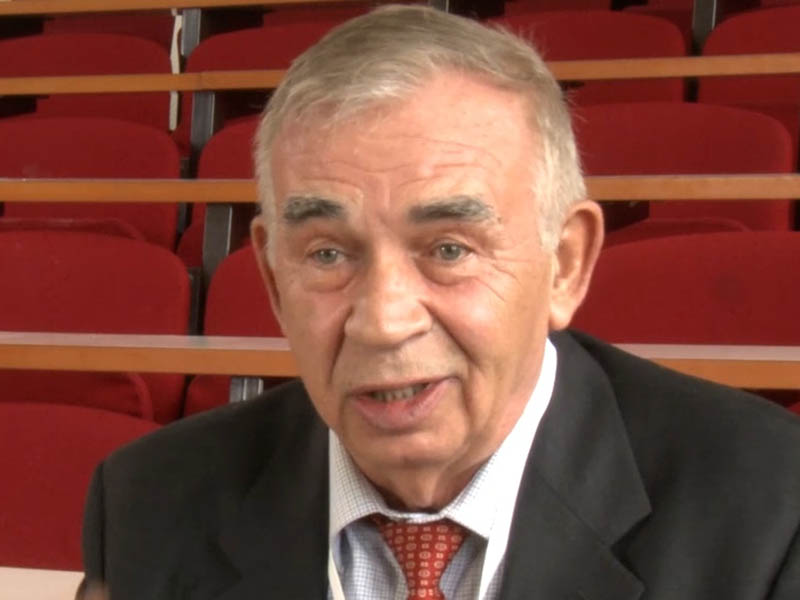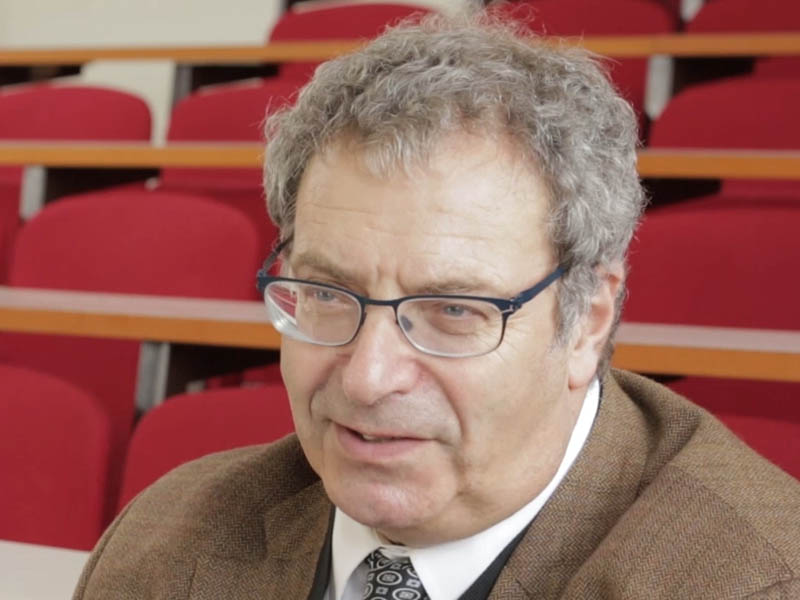Quantum Dots History
The Quantum Dots Discovery
At the end of the 1970s, Russian physicist Alexei Ekimov of the State Optics Institute Vavilov (Leningrad) synthesized nanocrystals of copper chloride and then of cadmium selenide in a molten glass matrix.
He then observed a fluorescence and a gradient of colors. These first observations were published in 1980.
Alexander Efros, another Russian physicist, published in 1982 the first theory aiming at explaining the behavior of these very small crystals by the confinement of their electrons.
Inspired by Alexei Ekimov, the American chemist Louis Brus, Bell Labs (Murray Hill, New Jersey) tried and successfully produced nanocrystals, but in a liquid form, to obtain a colloidal suspension. In this way, he obtained the first colloidal Quantum Dots of cadmium sulphide, easier to handle, and published his results in 1983.
Alexei Ekimov, the first discovery of the Quantum Dots
Alexei Ekimov obtained his PhD in physics in 1974 at the Ioffe Physical-Technical Institute in Leningrad. Researcher at the Vavilov State Optical Institute since 1977, he produced for the first time Quantum Dots in a molten glass matrix.
Since 1999, Alexei Ekimov has been the Chief Scientist at Nanocrystals Technology Inc. (NYC, NY).
In 2006, he won the Von Humboldt Award and the R. W. Wood Award from the Optical Society of America alongside Louis Brus and Alexander Efros for their discovery of Quantum Dots. In 2013, he shared, with Alexander Efros, the Gross Medal of the Russian Rozhdestvensky Optical Society.
Alexander Efros, the first to theorize the Quantum Dots
Alexander Efros obtained his PhD in 1978 at the Leningrad State Technical University.
From 1981 to 1990, he was a researcher at the Ioffe Institute in Leningrad.
In 1990 he became a researcher at the Technical University of Munich and was a visiting scholar at MIT (Cambridge, MA) in 1992. He held the position of consultant at the US Naval Research Laboratory (NRL) in Washington DC in 1993 before becoming a senior researcher.
Alexander Efros shared with Alexei Ekimov and Louis Brus the R. W. Wood prize of the Optical Society of America for the discovery of Quantum Dots.
In 2008, he received the Humboldt Research Award for Senior U.S. Scientists.
Finally, in 2013, he shared with Alexei Ekimov the Gross Medal of the Russian Rozhdestvensky Optical Society.
Louis Brus, the Colloidal Quantum Dots discovery
Louis Brus recieved his PhD at Columbia University in New York.
He discovered the first colloidal Quantum Dots in 1982 in AT&T Bell Laboratories, where he later left in 1996 to join Columbia University.
Louis Brus was elected to the United States Academy of Sciences in 2004.
He shared the R. W. Wood prize of the Optical Society of America with two other Quantum Dots pioneers, Alexei Ekimov and Alexander Efros. In 2008, Louis Brus also won the Kavli prize for Nanoscience and the NAS Award in Chemical Sciences in 2010 as well as the Franklin Institute’s Bower Award & Prize for Achievement in Science in 2012.
Early contributions to the Research on Quantum Dots
In Europe, it is Arnim Henglein, German chemist who paved the way to Quantum Dots in Berlin since 1982. In Asia, Tadashi Itoh at Sendai in Japan started to work on CuCl Quantum Dots in solid matrices in 1984.
In Bell Laboratories (Murray Hill, New Jersey), Louis Brus had two promising post-doctoral researchers, Moungi Bawendi and Paul Alivisatos, who would become important figures in the field of Quantum Dots. Moungi Bawendi would later be in charge of a team at MIT (Massachusetts). Paul Alivisatos will lead a team at UC Berkeley.
In 1993, Moungi Bawendi was at the origin of the production of the first “high quality” Quantum Dots that have less than 5% size variation in the colloidal suspension. This enabled researchers to control the size of Quantum Dots and fine-tune the color of their fluorescence.
Meanwhile, Philippe Guyot-Sionnest, a young professor at the University of Chicago, was interested in the multiphoton properties of these materials and in 1996, his team synthesized the first Quantum Dots with the core surrounded by a shell. This made it possible to stabilize the properties of the synthesized particles, and to provide easier interaction with their surface chemistry.
At the end of the 2000s, the teams from MIT, the University of Berkeley, the University of Chicago and Hamburg are particularly active in the field of research on Quantum Dots. In 2014, a conference to celebrate the 30th anniversary of the discovery of Quantum Dots was held at ESPCI. Most of the contributions of the invited speakers are online.
The control of the surface chemistry and the shape of the quantum dots then becomes the primary objective of these researchers.
The first rod-shaped Quantum Dots were produced in 2000 by a member of Paul Alivisatos’ team.
The Origin of Quantum Plates
In 2007, the team of Benoit Dubertret produced for the first time Quantum Plates at ESPCI (School of Physics and Chemistry of the City of Paris) ParisTech; flat crystals, a few atoms thick.
This was an extremely important step forward. Compared to conventional Quantum Dots, Quantum Plates are brighter, easier to implement for industrial applications, more heat resistant once encapsulated, and more stable over time. In addition, their emission is naturally polarized and directional.
Towards massive use of Quantum Dots
The optical properties of Quantum Dots make them great candidates to manufacture very high quality screens. They allow for better color rendering, with reduced energy consumption. They are already present in the high-end products of several manufacturers, including Samsung.
However, their large-scale adoption still faces obstacles. The very small size of Quantum Dots makes it difficult to adapt production lines designed to handle about 1000 times larger phosphors. Quantum Dots are also degraded by the oxygen and water molecules present in ambient air. They have to be placed between very expensive protective films. Finally, the best performing Quantum Dots contain too many heavy metals to be RoHS compliant.
The manufacture of Quantum Dots without heavy metals partially solves this last point, without providing a solution to the first two, and at the expense of performance.
Conversely, the encapsulation method developed at Nexdot overcomes all these obstacles, without impact on performance.
Ultimately, the Quantum Dots market is estimated at several tens of billions of dollars annually, first on display and lighting, then on electricity generation and storage solutions.



